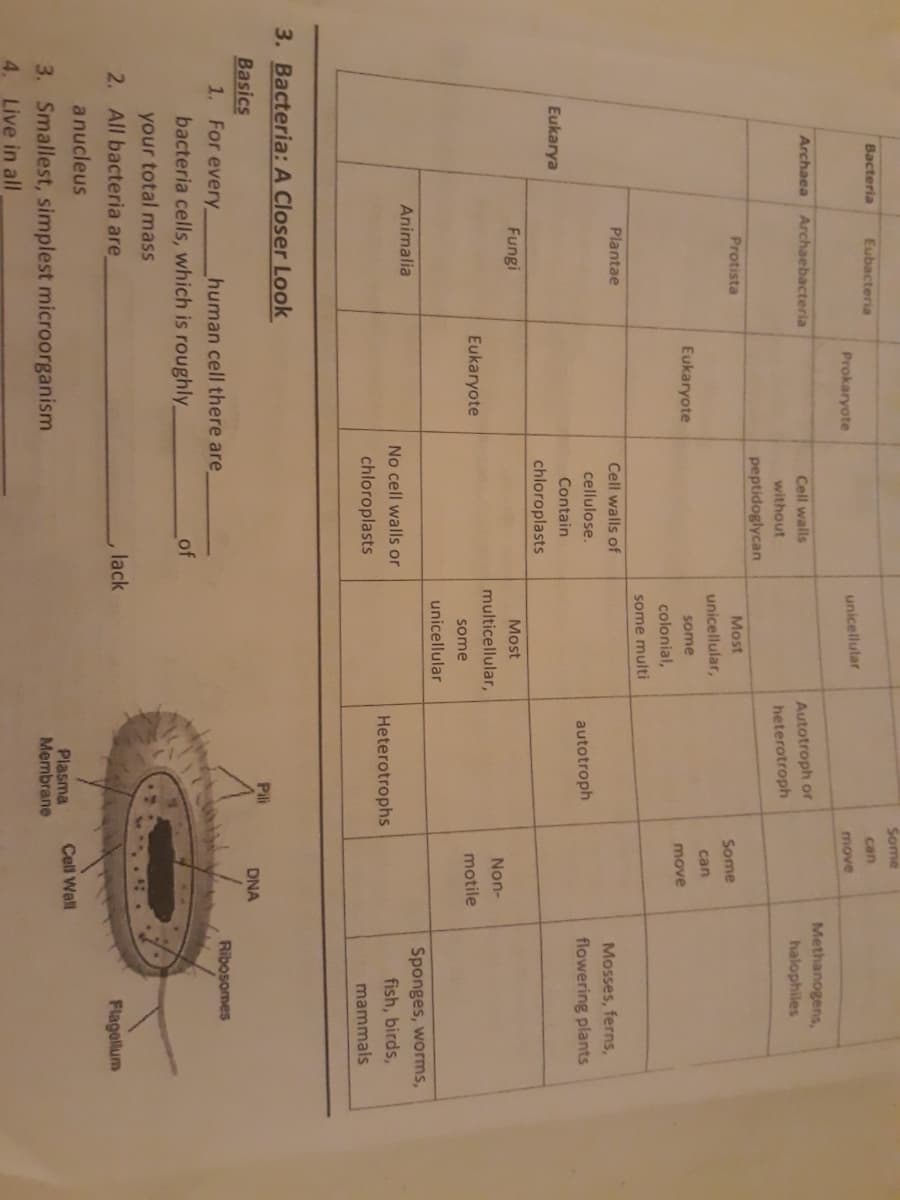Some Bacteria Eubacteria can Prokaryote unicellular move Archaea Archaebacteria Cell walls Autotroph or without heterotroph peptidoglycan Protista Most Some unicellular, can Eukaryote some move colonial, some multi Plantae Cell walls of cellulose. autotroph Eukarya Contain chloroplasts Fungi Most multicellular, No Eukaryote some mo unicellular Animalia No cell walls or Heterotrophs chloroplasts
Some Bacteria Eubacteria can Prokaryote unicellular move Archaea Archaebacteria Cell walls Autotroph or without heterotroph peptidoglycan Protista Most Some unicellular, can Eukaryote some move colonial, some multi Plantae Cell walls of cellulose. autotroph Eukarya Contain chloroplasts Fungi Most multicellular, No Eukaryote some mo unicellular Animalia No cell walls or Heterotrophs chloroplasts
Biology: The Unity and Diversity of Life (MindTap Course List)
15th Edition
ISBN:9781337408332
Author:Cecie Starr, Ralph Taggart, Christine Evers, Lisa Starr
Publisher:Cecie Starr, Ralph Taggart, Christine Evers, Lisa Starr
Chapter20: Viruses, Bacteria, And Archaea
Section: Chapter Questions
Problem 8SQ: Bacteria that serve as decomposers are ___ . a. photoautotrophs b. photoheterotrophs c....
Related questions
Topic Video
Question
100%

Transcribed Image Text:Some
Bacteria
Eubacteria
can
Prokaryote
unicellular
move
Archaea Archaebacteria
Methanogens,
Autotroph or
heterotroph
Cell walls
halophiles
without
peptidoglycan
Protista
Most
Some
unicellular,
can
Eukaryote
some
move
colonial,
some multi
Plantae
Cell walls of
Mosses, ferns,
cellulose.
autotroph
flowering plants
Contain
Eukarya
chloroplasts
Fungi
Most
multicellular,
Non-
Eukaryote
motile
some
unicellular
Animalia
Sponges, worms,
No cell walls or
Heterotrophs
fish, birds,
chloroplasts
mammals
3. Bacteria:A Closer Look
Pili
Basics
1. For every_
DNA
human cell there are
Ribosomes
bacteria cells, which is roughly.
of
your total mass
2. All bacteria are
lack
Flagellum
anucleus
Cell Wall
Plasma
Membrane
3. Smallest, simplest microorganism
4. Live in all
Expert Solution
This question has been solved!
Explore an expertly crafted, step-by-step solution for a thorough understanding of key concepts.
This is a popular solution!
Trending now
This is a popular solution!
Step by step
Solved in 3 steps with 1 images

Knowledge Booster
Learn more about
Need a deep-dive on the concept behind this application? Look no further. Learn more about this topic, biology and related others by exploring similar questions and additional content below.Recommended textbooks for you

Biology: The Unity and Diversity of Life (MindTap…
Biology
ISBN:
9781337408332
Author:
Cecie Starr, Ralph Taggart, Christine Evers, Lisa Starr
Publisher:
Cengage Learning

Biology: The Unity and Diversity of Life (MindTap…
Biology
ISBN:
9781337408332
Author:
Cecie Starr, Ralph Taggart, Christine Evers, Lisa Starr
Publisher:
Cengage Learning